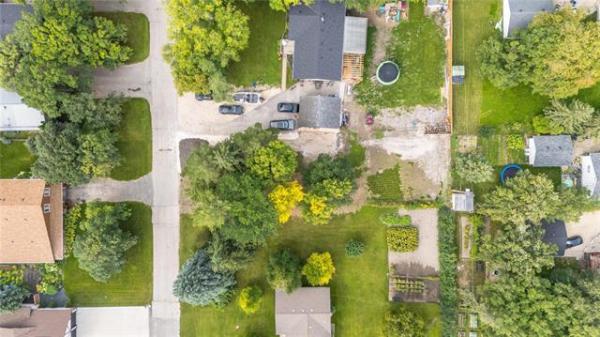QUESTION: I have a home that is 87 years old in the Deer Lodge area. We do not have any large trees in our lot, but our neighbours on the north side have quite a few, four of which are within two to three metres of our home. We have two wooden beams and four teleposts in our basement.
Over the past winter, we have developed deep cracks in the basement floor running along the north wall, as well as many small cracks in the floor. Last night I put my hand into the deepest crack adjacent to the wall and felt about three to four inches of empty space before touching gravel, almost as if there is a subfloor. The telepost on the northeast corner is being driven down into the concrete pad to the point where I am unable to turn it. Interestingly, just over a year ago it was so loose it almost fell over. The floor in our living room noticeably slopes to the northeast corner.
I am considering pouring gravel/fill into the space revealed by the cracks, then putting a quick plug hydraulic cement over top. Is this the right thing to do?
I realize the optimal solution is a major foundation repair but that is too expensive at this time.
I would appreciate your suggestions and input.
-- Todd Pennell
ANSWER: One of the most important things to remember when discussing house issues, whether it is with a contractor, building material supplier, or a building science professional, is to use terms correctly for appropriate systems. There is a large distinction between the basement concrete floor slab and the foundation walls, especially concerning cracks. While the large cracks in your basement floor slab may be of some concern, they are minor in comparison to similar ones if they were seen in the foundation walls.
Any concrete crack that you can physically insert a large portion of your hand into needs repair, no matter where the location. Regardless, the type of repair will depend greatly on the location of the concrete and its function. A large crack in your basement floor slab should be repaired, if for no other reason than to prevent further deterioration, but it is not normally a structural repair. There may be some debate about the extent of remediation required, but you should be able to determine the necessity of the repairs based on several of the items I will point out.
Basement concrete floor slabs primarily serve only two main functions. The first is to prevent moisture and pest intrusion into the basement from the soil beneath. The second, which is a structural issue, is to provide lateral support to the concrete foundation walls at the bottom. This lateral support helps prevent the bottom of the foundation walls from buckling inward under the pressure of expansive clay soil, which is present directly outside the foundation. Unless severely damaged or heaved, the second function is rarely an issue in a house the age of yours. So, repairs to the basement floor slab are most often done to improve function number one, without much regard to the second concern.
Expanding on that last point, upward movement and cracking in basement floor slabs is rarely a structural issue, unless there are not proper footings below the teleposts or foundation walls. The void that you are feeling is normally caused by repeated heaving and deterioration of the basement floor slab over many years and some erosion of the sub-slab soil. As the floor slab heaves slightly, usually after repeated heavy rains or due to the spring thaw, it can crack and will rarely recede all the way back to its original position. The concrete for this basement floor is normally poured around and on top of the footings for the house, which should be supporting the teleposts under your main beams. As long as the footing is not sinking, the post that appears to be driven into the floor is simply a result of the same heaving of the concrete, likely more in this area than elsewhere.
While your idea of adding fill to the void under your basement floor slab may seem like the correct action, it is not. The void under the slab has developed because of the yearly cycles of swelling and shrinking of the clay soil underneath. While this may become less severe with age, it won't completely disappear in the future. By filling this area and patching the crack, you will only be accelerating further damage to the floor slab when the soil expands, again.
A better repair would be to remove the damaged and heaved section of the floor slab and pour new concrete, after properly preparing a base of drainage stone beneath. That proper repair would eliminate the void, fill the existing large crack and provide a smoother basement floor slab in that area. As long as other large areas of the basement floor slab were not in the same condition, this repair could be done in one area without the major cost and mess of replacing the entire floor.
As for your foundation, that is an entirely different matter and not likely a major concern, unless the slope in your floor is the result of an individual sinking footing and not overall settlement of your home over many decades.
Ari Marantz is the owner of Trained Eye Home Inspection Ltd. and the president of the Canadian Association of Home & Property Inspectors - Manitoba (www.cahpi.mb.ca). Questions can be e-mailed to the address below. Ari can be reached at (204) 291-5358 or check out his website at www.trainedeye.ca.
trainedeye@iname.com



